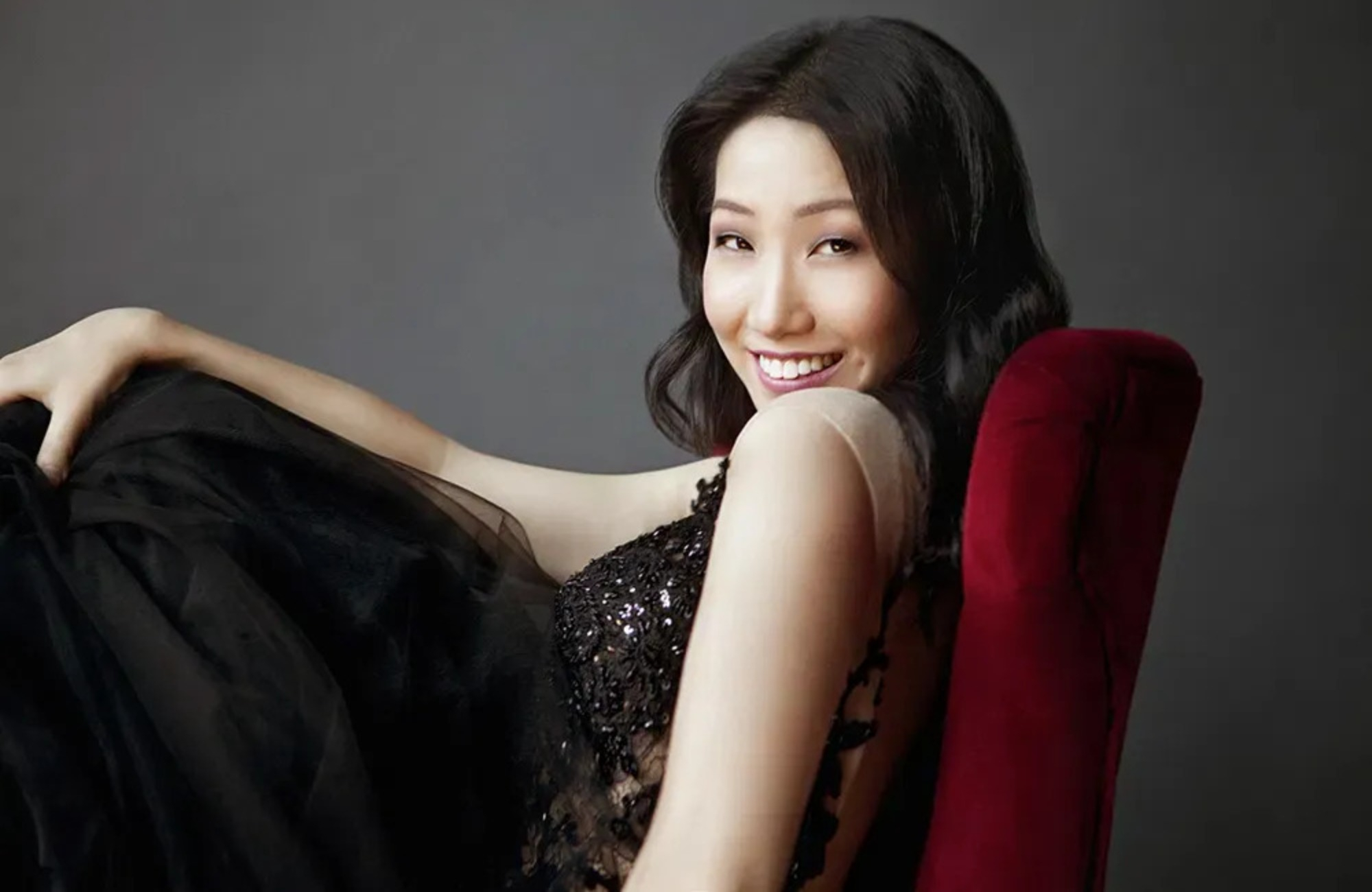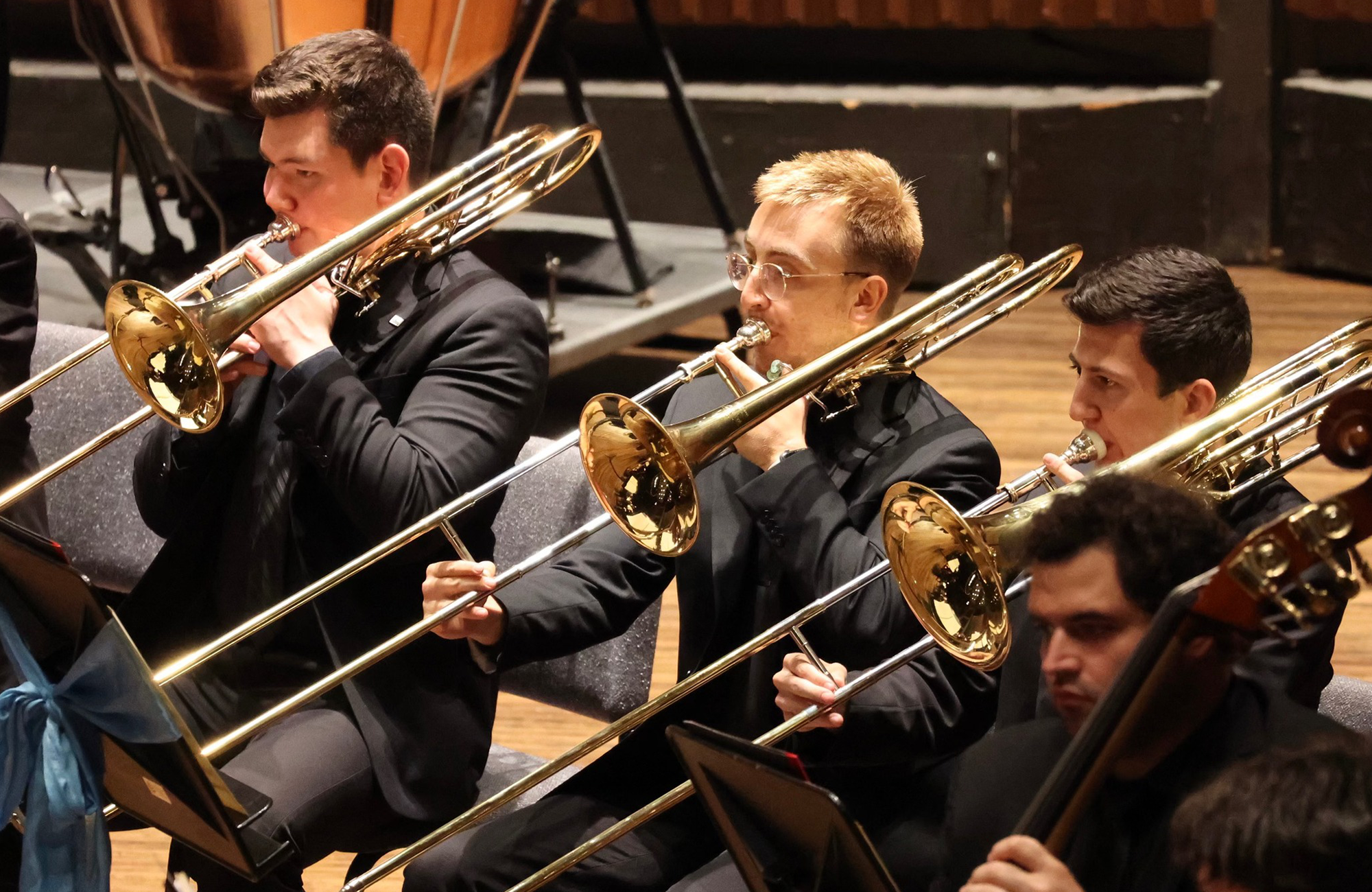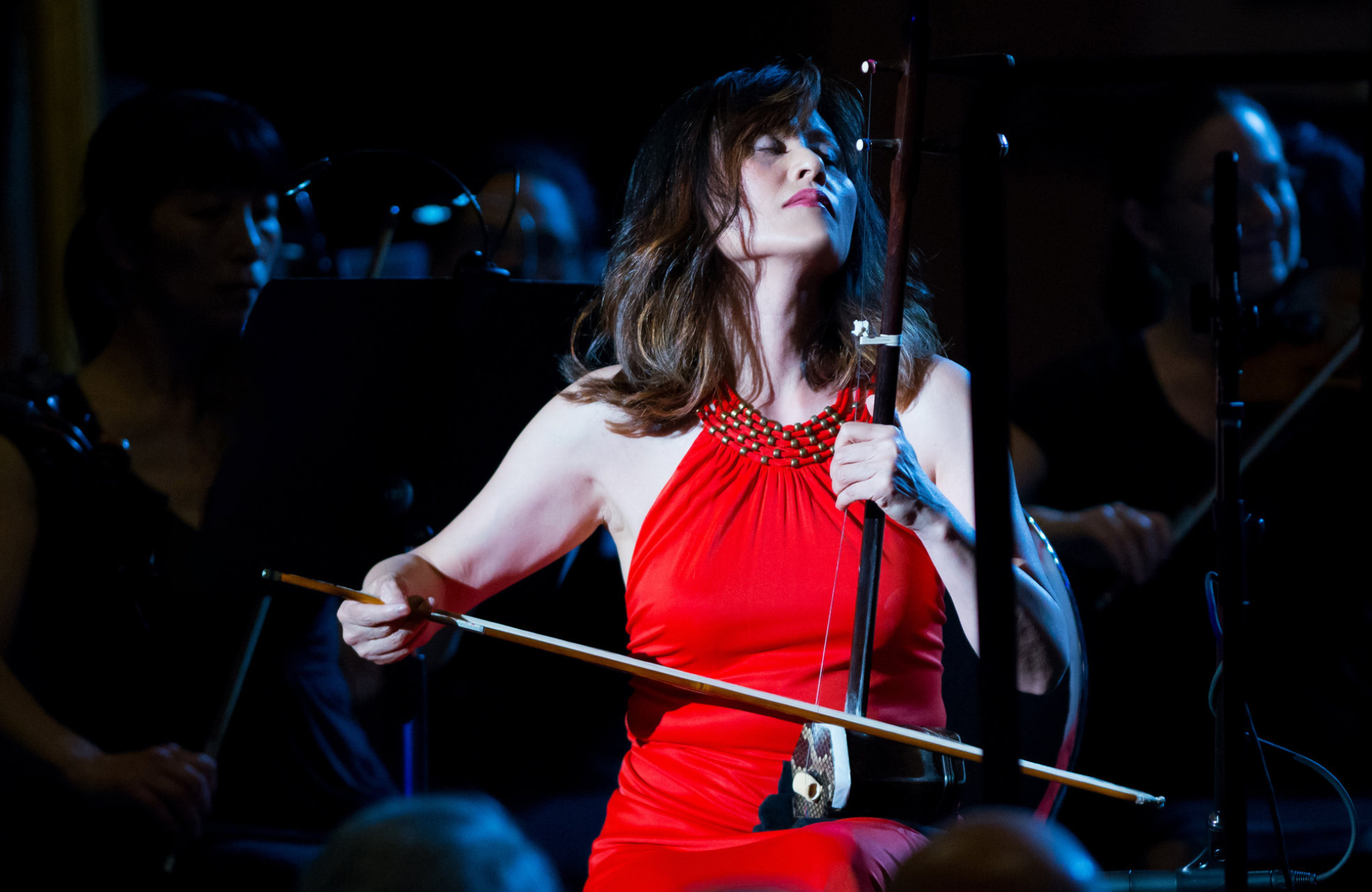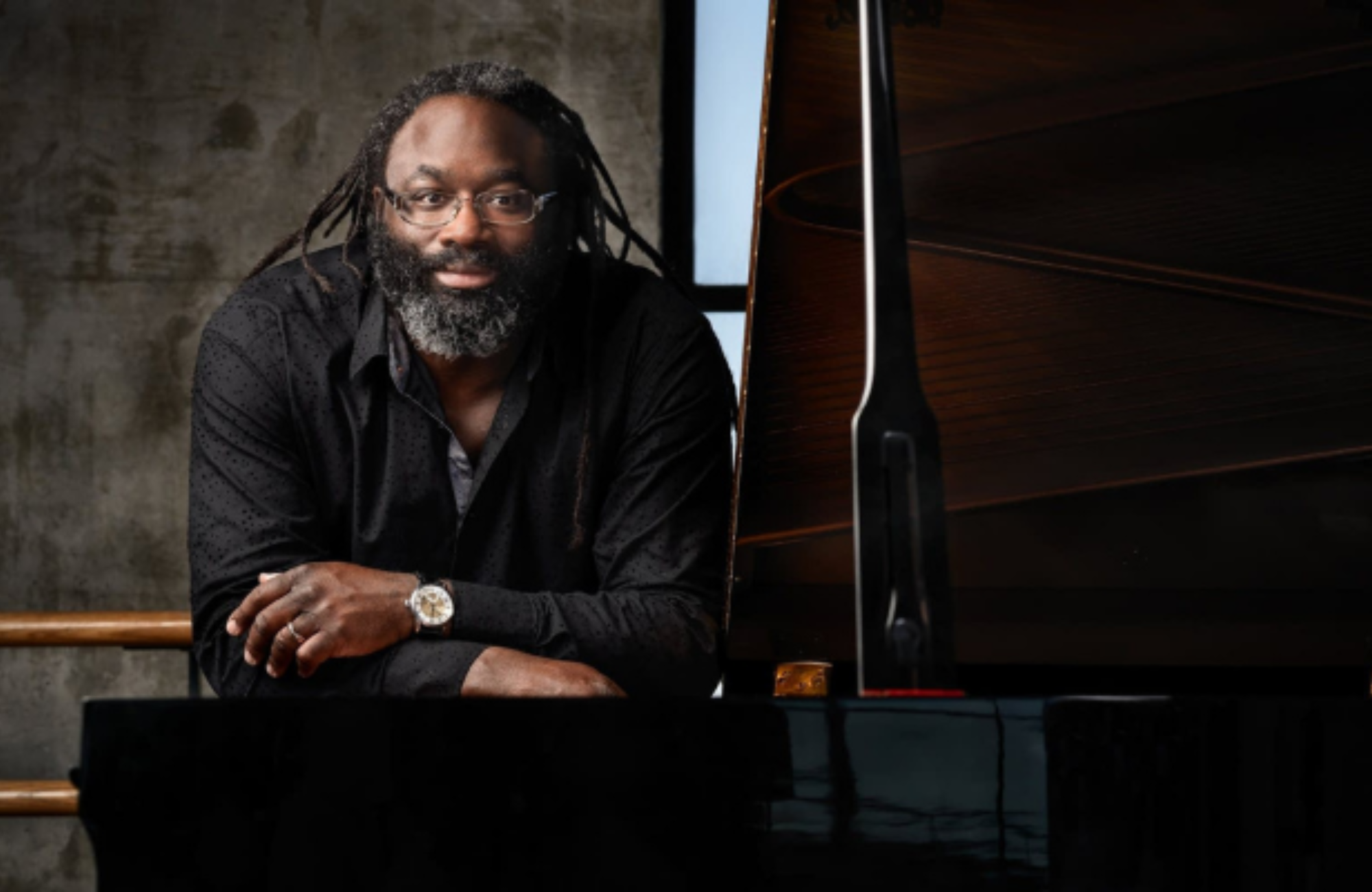Married pianists Alessio Bax and Lucille Chung perform two piano concertos from the “power couple” of the romantic era, Clara and Robert Schumann. However, the night would be incomplete without including music by Schumann’s protegé and close family friend, Johannes Brahms.
PROGRAM
BRAHMS: Tragic Overture in D minor, Op. 81 ![]()
SCHUMANN, CLARA: Wieck Concerto for Piano in A minor, Op. 7 ![]()
SCHUMANN, ROBERt: Manfred Overture
SCHUMANN, ROBERT: Concerto in A minor for Piano and Orchestra, Op. 54 ![]()
Thanks to our sponsors for this performance!
PROGRAM NOTES
Clara (née Wieck) (1819–1896) and Robert Schumann (1810–1856) stand with composer Benjamin Britten and tenor Peter Pears among the most productive partnerships in Western classical music. Granted, their story has its drama and suffering, from her father’s resistance to their marriage (a resistance only overcome after a court battle) to Robert’s syphilis, which led to a suicide attempt in 1854 and his confinement to a sanatorium for the last lonely years of his life. But despite the traumas, Clara and Robert inspired and supported each other. Clara, one of Europe’s foremost pianists, significantly advanced Robert’s fame through ...
Clara (née Wieck) (1819–1896) and Robert Schumann (1810–1856) stand with composer Benjamin Britten and tenor Peter Pears among the most productive partnerships in Western classical music. Granted, their story has its drama and suffering, from her father’s resistance to their marriage (a resistance only overcome after a court battle) to Robert’s syphilis, which led to a suicide attempt in 1854 and his confinement to a sanatorium for the last lonely years of his life. But despite the traumas, Clara and Robert inspired and supported each other. Clara, one of Europe’s foremost pianists, significantly advanced Robert’s fame through her concerts. Robert not only composed music for Clara to perform (including music inspired by works she had written), but also—in contrast to many husbands of the day—supported her own work as a composer. Even before they were married, he provided suggestions for the Piano Concerto we are playing tonight.
That Concerto, which was premiered by the 16-year-old pianist-composer in 1836, actually started out in 1833 as a single-movement piece; the first two movements were added later. It’s an astonishing work, and doubly so for a teenager. As Lucille Chung, the first of tonight’s soloists, points out, it’s improvisatory in outlook, fresh in spirit, adventurous in its harmonies (often shifting keys in unexpected ways), and bursting with elaborate filigree and other opportunities for Clara to flaunt her own virtuosity: “She must have been a helluva pianist!” Melodically engaging, it’s formally remarkable too. So many composers of the day—including Robert himself—were burdened by the weight of Beethoven as a model. Clara broke with conventions and went her own way.
The Concerto is nominally in three movements, but they’re continuous and thematically linked (it’s hardly an exaggeration to say that the opening upward flourish unifies the whole piece), looking ahead to the experiments of Liszt. More striking, the central movement is a kind of cadenza. It’s traditional for a concerto to include a cadenza (an opportunity for the soloist to play alone) toward the end of one or more of the movements; this one, however, upends tradition by replacing the entire second movement with a cadenza. (Copland did something similar in his Clarinet Concerto, which we played at the last Casual Concert, and Shostakovich employed the technique, too. But they were writing more than a century later, when formal demands had loosened considerably; and even in the mid-20th century, such cadenzas were unusual). To add to the striking nature of Clara’s musical experiment, the piano is joined by the solo cello, an idea later honored by Brahms in the third movement of his Second Piano Concerto. All in all, this teen was clearly way ahead of her time.
Whatever help Clara got from her future husband when writing the Concerto, it’s clear that she could have done the job without him. In contrast, it would be hard to imagine Robert’s 1845 Concerto without Clara. Clara inspired, encouraged, and premiered the work, and it clearly reflects his passion and appreciation. He even encodes her name into the music (like Bach and Shostakovich, he was fond of musical cyphers): One of the work’s primary motifs (C-B-A-A, or in German notation, C-H-A-A) is a short version of Chiara, the Italian version of her name he often used. As Lucille points out, Robert’s Concerto also copies many of the ideas in Clara’s; and like Clara’s, it began as a single-movement work (in this case, the first movement).
And yet, for all the ways in which they intertwine, each concerto has its own voice. Robert’s is certainly more mature (no surprise, given that he wrote it mid-career). It is also, our second pianist (and Lucille’s husband) Alessio Bax points out, less improvisatory: “Solidly constructed,” it reveals a strong streak of classicism. Yet at the same time, Robert had “a completely free imagination” and the concerto is consequently “very light on its feet.” Those superficially conflicting qualities make “a very hard balance to strike. It’s one of the trickiest concertos to play, thus one of the most satisfying. So perfect in many ways.” Perfect—and intimate. It is easily the most affectionate of the canonical Romantic concertos.
The Concerto shows us Robert the devoted husband, the composer-poet of the piano; but as we know, there were darker currents to his psyche. Robert himself gave names to what he saw as two main aspects of his personality: Eusebius for his more introspective side; Florestan (after the heroic prisoner in Beethoven’s Fidelio) for his more dramatic, impulsive side. But that was surely a simplification. In any case, Robert’s Manfred (1848) reveals a radically different sensibility from the one we hear in the Concerto. Where the Concerto is an expression of tenderness, Manfred is an explosion of something darker. It’s a set of incidental music intended to accompany Byron’s semi-autobiographical poem Manfred, an overwrought tale of a romantic anti-hero coming to terms with the death of his sister, following their incestuous affair. The complete work—which requires singers, narrators, and chorus as well as orchestra—is rarely heard. But the stormy overture is a concert favorite.
It begins with a striking gesture that throws us off balance: three off-beat chords, followed by a rest and a change of tempo. This sets us up for an impulsive work full of painful dissonances, bold accents, and cries of despair. Eventually, the music burns out, with a heartbreaking passage where brief shards of music float by, like fleeting memories, before the poignant closing. We chose it in part because it casts light on Robert’s wide-ranging spirit, but also because it looks ahead to the final concert of our season, Mahler’s Second Symphony. The Manfred Overture was the very first work Mahler performed as conductor of the New York Philharmonic. By a strange coincidence, it was also the work through which Leonard Bernstein introduced himself to the orchestra.
Just as it’s hard to discuss Robert without discussing Clara (or vice-versa), it’s hard to discuss the couple without mentioning Johannes Brahms (1833–1897), who turned their marriage into a convoluted triangle. The young Brahms met the Schumanns in 1853; and despite his youth, he quickly became a protégé. Robert and Brahms collaborated (with Albert Dietrich) on a violin sonata; and in his role as a music critic, Robert was able to give Brahms’s career an early boost in the press. Brahms got a similar boost from Clara’s performances of his music.
Brahms also become a close family friend. He was indispensable during Robert’s final illness, living in their house, helping care for the children, and visiting Robert in the sanatorium (Clara was not allowed to see him until right before the end). After Robert’s death, Brahms and Clara remained close. Marriage seems to have been out of the question, and there’s no evidence of a physical relationship; but their connection was both passionate and profound, on both the personal and artistic levels. Their devotion to each other did not diminish their devotion to Robert, however, and they both spent considerable energy on editing his scores and assuring that his musical contributions remained before the public.
It thus seems appropriate to open our concert with Brahms’s Tragic Overture, composed in 1880 as a counterweight to his Academic Festival Overture—as stern and dramatic as its sibling is whimsical. It has certain features in common with the Manfred Overture, but it’s more abstract (it doesn’t represent a specific text but rather a general spirit), and on the whole it’s less impulsive, more determined. If Byron’s hero is searching and (until the end) unsure of his fate, Brahms’s looks his demons directly in the eye. The differences are clear from their openings: both works begin with a striking series of chords, but Robert Schumann’s are questing, Brahms’s are decisive. And the final pages reflect those differences, too, Manfred ending in regret, the Tragic defiant to the end.
Peter J. Rabinowitz
Have any comments or questions? Please write to me at prabinowitz@ExperienceSymphoria.org
FEATURED ARTISTS

Described as bringing an “artisan storyteller’s sensitivity… shaping passages with clarity and power via beautifully sculpted dynamics… revealing orchestral character not seen or heard before” (Arts Knoxville) Lawrence Loh enjoys a dynamic career as a conductor of orchestras all over the world.
After an extensive two ...
Described as bringing an “artisan storyteller’s sensitivity… shaping passages with clarity and power via beautifully sculpted dynamics… revealing orchestral character not seen or heard before” (Arts Knoxville) Lawrence Loh enjoys a dynamic career as a conductor of orchestras all over the world.
After an extensive two year search, Lawrence Loh was recently named Music Director of the Waco Symphony Orchestra beginning in the Spring of 2024. Since 2015, he has served as Music Director of The Syracuse Orchestra (formerly called Symphoria), the successor to the Syracuse Symphony Orchestra. “The connection between the organization and its audience is one of the qualities that’s come to define Syracuse’s symphony as it wraps up its 10th season, a milestone that might have seemed impossible at the beginning,” (Syracuse.com) The Syracuse Orchestra and Lawrence Loh show that it is possible to create a “new, more sustainable artistic institution from the ground up.”
Appointed Assistant Conductor of the Pittsburgh Symphony in 2005, Mr Loh was quickly promoted to Associate and Resident Conductor within the first three years of working with the PSO. Always a favorite among Pittsburgh audiences, Loh returns frequently to his adopted city to conduct the PSO in a variety of concerts. Mr. Loh previously served as Music Director of the West Virginia Symphony Orchestra, Music Director of the Northeastern Pennsylvania Philharmonic, Artistic Director and Principal Conductor of the Syracuse Opera, Music Director of the Pittsburgh Youth Symphony Orchestra, Associate Conductor of the Dallas Symphony Orchestra, Associate Conductor of the Colorado Symphony Orchestra and Music Director of the Denver Young Artists Orchestra.
Mr. Loh’s recent guest conducting engagements include the San Francisco Symphony, Dallas Symphony, North Carolina Symphony, Baltimore Symphony, Sarasota Orchestra, Florida Orchestra, Pensacola Symphony, Atlanta Symphony, National Symphony, Detroit Symphony, San Diego Symphony, Seattle Symphony, National Symphony (D.C.), Utah Symphony, Rochester Philharmonic, Indianapolis Symphony, Calgary Philharmonic, Buffalo Philharmonic, Albany Symphony and the Cathedral Choral Society at the Washington National Cathedral. His summer appearances include the festivals of Grant Park, Boston University Tanglewood Institute, Tanglewood with the Boston Pops, Chautauqua, Sun Valley, Shippensburg, Bravo Vail Valley, the Kinhaven Music School and the Performing Arts Institute (PA).
As a self-described “Star Wars geek” and film music enthusiast, Loh has conducted numerous sold-out John Williams and film music tribute concerts. Part of his appeal is his ability to serve as both host and conductor. “It is his enthusiasm for Williams’ music and the films for which it was written that is Loh’s great strength in this program. A fan’s enthusiasm drives his performances in broad strokes and details and fills his speaking to the audience with irresistible appeal. He used no cue cards. One felt he could speak at filibuster length on Williams’ music.” (Pittsburgh Tribune)
Mr Loh has assisted John Williams on multiple occasions and has worked with a wide range of pops artists from Chris Botti and Ann Hampton Callaway to Jason Alexander and Idina Menzel. As one of the most requested conductors for conducting Films in Concert, Loh has led Black Panther, Star Wars (Episodes 4-6), Jaws, Nightmare Before Christmas, Jurassic Park, Casablanca, The Wizard of Oz and Singin’ in the Rain, among other film productions.
Lawrence Loh received his Artist Diploma in Orchestral Conducting from Yale, his Masters in Choral Conducting from Indiana University and his Bachelor of Arts from the University of Rochester. Lawrence Loh was born in southern California of Korean parentage and raised in Carlisle, Pennsylvania. He and his wife Jennifer have a son, Charlie, and a daughter, Hilary. Follow him on instagram @conductorlarryloh or Facebook at @lawrencelohconductor or visit his website, www.lawrenceloh.com

Born in Montréal, Canadian pianist Lucille Chung has been acclaimed for her “stylish and refined performances” by Gramophone magazine, “combining vigor and suppleness with natural eloquence and elegance” (Le Soir).
She made her debut at the age of ten with the Montréal Symphony Orchestra and ...
Born in Montréal, Canadian pianist Lucille Chung has been acclaimed for her “stylish and refined performances” by Gramophone magazine, “combining vigor and suppleness with natural eloquence and elegance” (Le Soir).
She made her debut at the age of ten with the Montréal Symphony Orchestra and Charles Dutoit subsequently invited her to be a featured soloist during the MSO Asian Tour in 1989. Since then, she has performed an extensive concerto repertoire spanning from Bach to Adams with over 70 leading orchestras such as the Philadelphia Orchestra, Moscow Virtuosi, BBC National Orchestra of Wales, Flemish Radio Orchestra, Orquesta Sinfónica de Tenerífe, Orquesta Sinfónica de Bilbao, Staatskapelle Weimar, Philharmonie de Lorraine, Orchestra Sinfonica Siciliana, Belgrade Philharmonic, Seoul Philharmonic, KBS Orchestra, St. Louis Symphony, New Jersey Symphony, Dallas Symphony, UNAM Philharmonic (Mexico), Orquesta Filarmónica de Buenos Aires, MAV Symphony (Budapest), Lithuanian National Symphony, Israel Chamber Orchestra as well as all the major Canadian orchestras, including Montreal, Toronto, Vancouver, National Arts Centre (Ottawa), Calgary, Winnipeg and Métropolitain, among others. She has appeared with conductors such as Krzysztof Penderecki, Vladimir Spivakov, Vasily Petrenko, Yannick Nézet-Séguin, Stéphane Denève, Peter Oundjian, Gerd Albrecht and Charles Dutoit.
As a recitalist, she has performed in over 35 countries in prestigious venues such as the Wigmore Hall in London, New York’s Carnegie Hall and Lincoln Center, the Kennedy Center and Phillips Collection in Washington, D.C., Spivey Hall, the Concertgebouw in Amsterdam, Madrid’s Auditorio Nacional, the Great Hall of the Franz Liszt Academy in Budapest, the Palais des Beaux-Arts in Brussels, the Seoul Arts Center, and Sala São Paulo. Festival appearances include the Verbier Festival in Switzerland, Incontri in Terra di Siena in Italy, MDR Sommer Festival in Dresden, Lübecker Kammermusikfest, Salon-de-Provence Festival, Santander International Festival and Gijón International Piano Festival in Spain, Felicja Blumental Festival in Israel, Music@Menlo, Mainly Mozart, Great Lakes Chamber Music Festival, Montreal International Festival, Ottawa Chamber Festival, Bard Music Festival in NY, International Keyboard Institute and Festival in NYC, Chang Chun Festival in China, and the Bravissimo Festival in Guatemala.
In 1989, she was recognized on the international scene as the First Prize winner at the Stravinsky International Piano Competition. She won Second Prize at the 1992 Montreal International Music Competition, at which she also won a Special Prize for the best interpretation of the unpublished work. In 1993, she received the Outstanding Achievement Award from the Governor General of Canada and in 1994 won the Second Prize at the First International Franz Liszt Competition in Weimar. In 1999, she was awarded the prestigious Virginia Parker Prize by the Canada Council for the Arts.
Before turning twenty, she graduated from both the Curtis Institute of Music and the Juilliard School, where she studied with Seymour Lipkin. She decided to further her studies in London with Maria Curcio-Diamand, Schnabel’s protégée, at the “Mozarteum” in Salzburg with Karl-Heinz Kämmerling and received the Konzertexam Diplom from the Hochschule “Franz Liszt” in Weimar, where she worked with the late Lazar Berman. She was the first non-Italian recipient of the honorary title of “Master” upon graduating from the Accademia Pianistica “Incontri col Maestro” in Imola, Italy. She also worked with Joaquín Achúcarro at Southern Methodist University, where she held the Johnson-Prothro Artist-in-Residence endowed position. Ms. Chung is the recipient of the Honors Diploma at the Accademia Chigiana in Siena, Italy and was named Honorary Professor of the Jilin Arts College in China.
Lucille Chung has been hailed as “a considerable artist, admirable for her bold choice of music” by The Sunday Times for her recordings of the complete piano works by György Ligeti on the Dynamic label. The first volume was released in 2001 to great critical acclaim, receiving the maximum R10 from Classica-Répertoire in France, 5 Stars from the BBC Music Magazine, and 5 Stars in Fono Forum in Germany. The final volume, which also contains works for two pianos, was recorded with her husband, Alessio Bax and once again received the prestigious R10 from Classica-Répertoire. Her all-Scriabin CD won the “Best Instrumental Recording” prize at the 2003 Prelude Classical Awards in Holland as well as the coveted R10 from Classica-Répertoire in France.
She also recorded the two Mendelssohn Piano Concerti on the Richelieu/Radio-Canada label, which was nominated for the Prix Opus in Canada. In August 2005, Bax and Chung recorded Saint-Saëns’ Carnival of the Animals with the Fort Worth Symphony and Maestro Miguel Harth-Bedoya with narration by Michael York. In 2007 she released a solo album for the Fazioli Concert Hall Series. Lucille then embarked on an exclusive contract with Disques XXI/Universal: Camille Saint-Saëns Piano Transcriptions and Mozart & Me. 2013 marked the release of a piano duo disc with Alessio Bax, presenting Stravinsky’s original four-hand version of the ballet Petrouchka as well as music by Brahms and Piazzolla for Signum Records. In 2015, she released an all-Poulenc album for Signum Records, which was chosen as the “Recording of the Month” on MusicWeb and most recently in 2018, her 14th album titled Liszt Piano Works was released to great acclaim. Her upcoming album for Signum Records will feature works by Debussy and Ravel.
Lucille is fluent in French, English, Korean, Italian, German, and Russian. She and husband, pianist Alessio Bax make their home in New York City with their daughter, Mila, and are artistic co-directors of the Joaquín Achúcarro Foundation, which seeks to further the careers of young pianists.

Combining exceptional lyricism and insight with consummate technique, Alessio Bax is without a doubt “among the most remarkable young pianists now before the public” (Gramophone). He catapulted to prominence with First Prize wins at both the Leeds and Hamamatsu International Piano Competitions, and is now a familiar face on ...
Combining exceptional lyricism and insight with consummate technique, Alessio Bax is without a doubt “among the most remarkable young pianists now before the public” (Gramophone). He catapulted to prominence with First Prize wins at both the Leeds and Hamamatsu International Piano Competitions, and is now a familiar face on five continents, not only as a recitalist and chamber musician, but also as a concerto soloist who has appeared with more than 150 orchestras, including the London, Royal, and St. Petersburg Philharmonic Orchestras, the New York, Boston, Dallas, Cincinnati, Sydney, and City of Birmingham Symphony Orchestras, and the NHK Symphony in Japan, collaborating with such eminent conductors as Marin Alsop, Vladimir Ashkenazy, Sir Andrew Davis, Fabio Luisi, Sir Simon Rattle, Yuri Temirkanov, and Jaap van Zweden.
Bax constantly explores many facets of his career. He released his eleventh Signum Classics album, Italian Inspirations, whose program was also the vehicle for his solo recital debut at New York’s 92nd Street Y as well as on tour. He recently embarked on a trio tour of Spain with violinist Joshua Bell and cellist Steven Isserlis. Bax and his regular piano duo partner, Lucille Chung, gave recitals at New York’s Lincoln Center and were featured with the St. Louis Symphony and Stéphane Denève. He has also presented the complete works of Beethoven for cello and piano with cellist Paul Watkins in New York City. Next season he will make his debut with the Milwaukee Symphony, performing Brahms’ second piano concerto and will return for the fourth time for two recitals at the historic Teatro Colón in Buenos Aires. This past summer was highlighted by his fifth season as Artistic Director of Tuscany’s Incontri in Terra di Siena festival as well as return appearances at the Seattle Chamber Music Festival and at the Bravo! Vail Music Festival with the Dallas Symphony and Fabio Luisi conducting.
Bax revisited Mozart’s K. 491 and K. 595 concertos, as heard on Alessio Bax Plays Mozart, for his recent debuts with the Boston and Melbourne Symphonies, both with Sir Andrew Davis, and with the Sydney Symphony, which he led himself from the keyboard. Other recent highlights include the pianist’s Auckland Philharmonia debut, concerts in Israel, a Japanese tour featuring dates with the Tokyo Symphony, a U.S. tour with flutist Emmanuel Pahud and an Asian tour with Daishin Kashimoto. Recent seasons also saw Bax make his solo recital debut at London’s Wigmore Hall, and give concerts at L.A.’s Disney Hall, Washington’s Kennedy Center, and New York’s Carnegie Hall. In 2009, he was awarded an Avery Fisher Career Grant, and four years later he received both the Andrew Wolf Chamber Music Award and the Lincoln Center Award for Emerging Artists.
Bax’s celebrated Signum Classics discography includes Beethoven’s “Hammerklavier” and “Moonlight” Sonatas (a Gramophone “Editor’s Choice”); Beethoven’s “Emperor” Concerto; Bax & Chung, a duo disc with Lucille Chung; Alessio Bax plays Mozart, recorded with London’s Southbank Sinfonia; Alessio Bax: Scriabin & Mussorgsky (named “Recording of the Month … and quite possibly … of the year” by MusicWeb International); Alessio Bax plays Brahms (a Gramophone “Critics’ Choice”); Bach Transcribed; and Rachmaninov: Preludes & Melodies (an American Record Guide “Critics’ Choice 2011”). Recorded for Warner Classics, his Baroque Reflections album was also a Gramophone “Editor’s Choice.” He performed Beethoven’s “Hammerklavier” Sonata for Daniel Barenboim in the PBS-TV documentary Barenboim on Beethoven: Masterclass, available on DVD from EMI.
At age 14, Bax graduated with top honors from the conservatory of Bari, his hometown in Italy, and after further studies in Europe, he moved to the United States in 1994. A Steinway artist, he lives in New York City with pianist Lucille Chung and their daughter, Mila. He was invited to join the piano faculty of Boston’s New England Conservatory in the fall of 2019.






